When I was in school, the first time I remember being required to write about a text was 7th grade. Yep, 7th grade. Maybe my memory fails me, but in elementary school, I don’t recall ever writing a paragraph about the main idea of an article, or a couple of lines about a character’s traits.
I’m sure I had to do a little bit of text-based writing here and there, but certainly not the amount or level that the Common Core Standards now require of our youngest students. But do I think that writing about texts is inappropriate for our little ones? Absolutely not!
When you read through the K-2 Common Core Standards for writing, you see that the text-based writing requirements are simple and developmentally appropriate.
In Kindergarten, for example, the writing standards ask kids to “tell a reader the topic or the name of the book they are writing about and state an opinion or preference about the topic or book (e.g., My favorite book is…).” In first grade, they are asked to “[w]rite opinion pieces in which they introduce the topic or name the book they are writing about, state an opinion, supply a reason for the opinion, and provide some sense of closure.” And in second grade, the same standard reads, “Write opinion pieces in which they introduce the topic or book they are writing about, state an opinion, supply reasons that support the opinion, use linking words (e.g., because, and, also) to connect opinion and reasons, and provide a concluding statement or section.”
In addition to this opinion-based type of writing, Kindergarten through second grade students are also asked to “recall information from experiences or gather information from provided sources to answer a question.”
In other words, we have to get kids to share their opinions about books and support them. We also need to teach our students to answer questions (in writing) about the books they read. Not bad, right?
Even though it’s definitely reasonable to expect students to write about the ideas in texts, getting them to do so successfully can get a little tricky. I, as an adult, feel very comfortable sharing my opinions and ideas about texts through writing. However, I’ve sometimes struggled to break down that complex skill set for my students.
Through trial and error, I’ve found a few strategies that have worked when teaching my students to write about texts. It’s still not an area that I consider myself completely proficient in, but here’s what’s worked for my kids in the past:
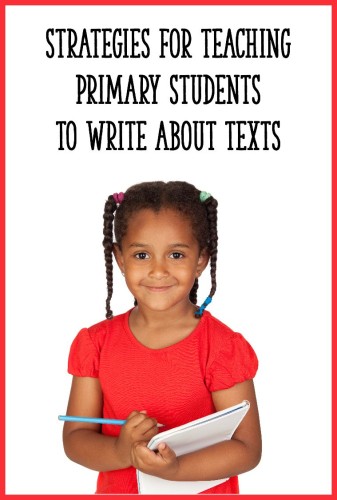
Image: Shutterstock/Gelpi JM
- Have them draw before they write. This one is most applicable to Kinder and first grade. It’s developmentally appropriate for little ones to draw before they write, and this applies to text-based writing, too. You’ll want to spend some time talking with your students individually, to figure out what their drawings mean (especially with those students who are not quite ready to explain themselves using words). I’ve found that my students really can convey some complex ideas through drawing!
- Model. Model. Model. In all of my posts about writing, I always mention the importance of modeling. So you’re probably sick of hearing it. But seriously, you should model. A lot. Not once. Not three times. Not five times. All the time!! It will really and truly help your kids understand what you want them to do. In my second grade shared reading curriculum, it’s set up so that you model writing a text-based response once a week. You show your kids how you answer a question using a text (one that you’ve read aloud, so all students are familiar with it). You use a document camera so that they can watch you write and listen to you think aloud. Then, later in the week, your students answer the same question – but using a different text that you’ve read to them. My second graders were very successful with their written responses when I used the once-a-week modeling structure!
- Give them access to the book when they are working on their responses. This can be a little tricky logistically, especially when you’re having them respond to a book you’re used as a readaloud. But if you want kids to give specific examples from the text, letting them have the text right in front of them is important. Consider checking out a few different copies of the book you read aloud. You can place them on kids’ tables, or let students take turns with the copies. Or make your written response activity a center, so a small group of kids can share the book. Or you could even read aloud texts from your basal series, so kids can each grab a copy – the stories in those textbooks are usually great, even if you don’t use the whole reading program.
- Provide differentiated response sheets to meet your students’ varying needs. Your kids should all draw and write about texts, but they may need different levels of support to be successful. Sentence starters can be a huge help with this (and they are great for English Language Learners, too!). Check out the different versions I created for a single assignment (shown below). I created these materials for second grade students, but you could also easily adapt this concept for K or 1st (just add a box for drawing pictures for K and early 1st):
This image shows the question students will be answering. You’d give the above sheet to students who are able to independently answer the question and structure their responses.
This image shows the same question, but it includes sentence starters. The sentence starters provide the structure for students’ responses, so they can focus on putting their ideas on paper. You’d give this sheet to students who need a little more support in answering the question and organizing their writing.
This sheet shows a completely different question, but it gets at the same concept (understanding the differing points of view of two characters in the text). You could give this more complex assignment to your gifted / high-achieving students, instead of the standard assignment.
All of these materials come from my second grade shared reading and written response curriculum. Every week, the kids practice responding to a question about the texts you read during shared reading (shared reading lessons also included). You also get sample responses that you can model for the kids, like this one:
These strategies have been extremely helpful in improving my students’ responses to texts, and I hope they are useful for you, too! According to the CCSS, the goal is for students, by the end of high school, to be able to “Write arguments to support claims in an analysis of substantive topics or texts using valid reasoning and relevant and sufficient evidence” (CCSS.ELA-LITERACY.CCRA.W.1). When we teach our little ones how to write about texts, we are empowering and preparing them to ultimately achieve this objective in the future.
Resources:
National Governors Association Center for Best Practices, & Council of Chief State School Officers. (2010). Common Core State Standards for English Language Arts.

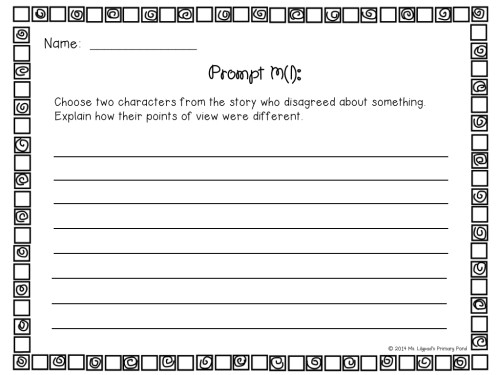
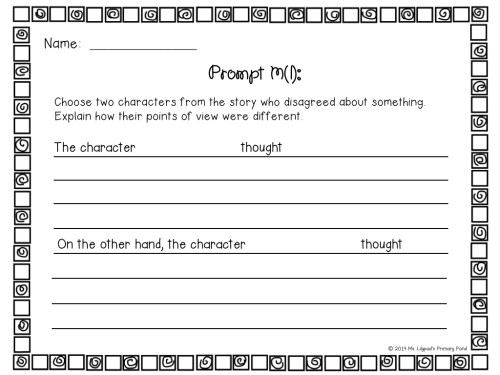
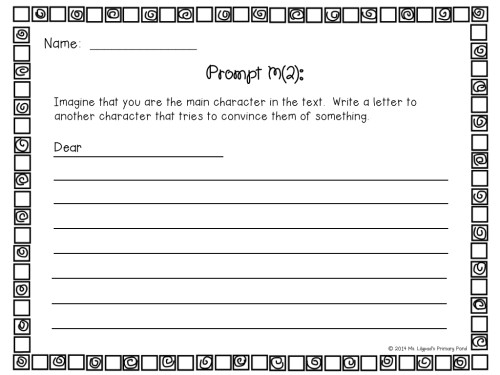
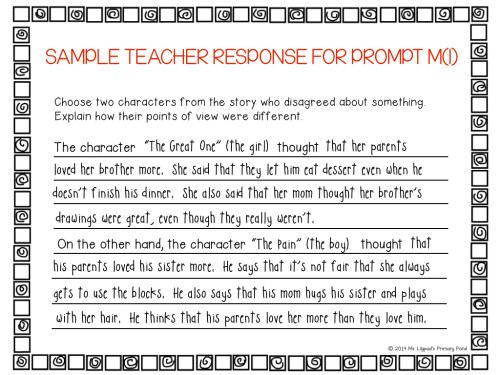
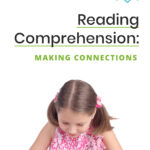
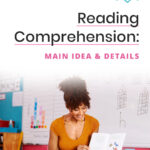
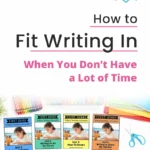
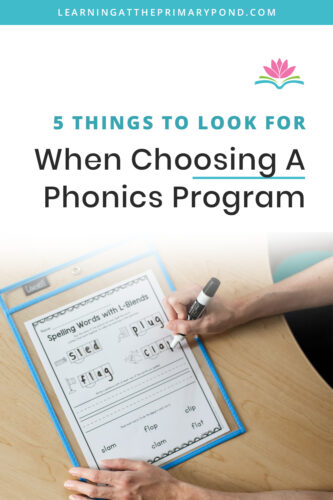
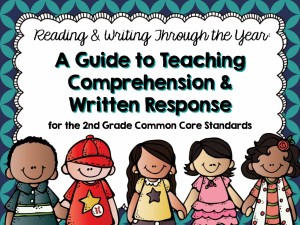
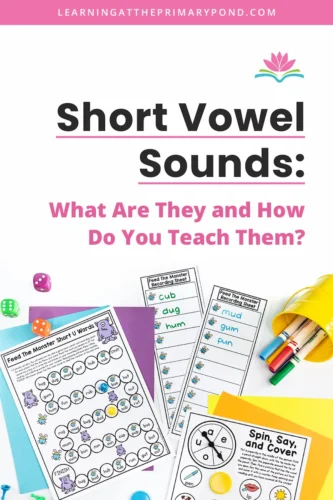






Thank you for sharing this fantastic resource! My school is going to start experimenting with reading response journals & I have been looking for some scaffolding tools for Gr1. You’re a rock star!
You’re so welcome, Rich! Thanks for commenting. Good luck with the reading response journals – I would love to hear how it goes!
Alison
Allison, Great post! In addition to all the strategies you mentioned, before student “draw then write” students should “talk then draw.” Students need to speak out loud what they want to write about before the draw and write it. Lucy calls it “oral rehearsal” and it’s key for all kids, not just little ones. Nice work! Jen
Thanks, Jen! So true – I like having my kids talk to a seat partner right before they begin, so they don’t forget what they talked about (as opposed to having them chat on the rug, during whole group). Thanks for your comment!
Alison